Sunday, Sep 24 2023
Lincoln and Omaha are the only cities in Nebraska with large populations. As of the 2020 census Omaha had a population of 491,000, Lincoln 291,000 and then came Bellevue with 64,000.
I fly home on Tuesday and this was my buffer day in case I had car trouble or some other unforeseen delay toward the end of the trip. That did not happen so I was able to spend a relaxing day in Lincoln.
My first visit of the day was at the Sunken Gardens. This is a small city park that is free to visit and is a formal garden designed with a different theme each year. This year’s theme was “Magical Mystery Tour” and the bright colors were intended to reflect the bright primary colors of the psychedelic art on some of The Beatles album covers. Full details of the design can be found here but I have to confess I could not identify the places mentioned. It was, however, a wonderful place to spend some time on a sunny Sunday morning.
After brunch, enjoying a beer and sandwich in the sun, I moved on to The University of Nebraska State Museum, which I loved. This would have been impossible to visit yesterday as it is just 300 yards (275 m) from Memorial Stadium where the University’s football team were playing their 391st consecutive sellout game in front of a crowd of over 85,000. Nebraska has no professional sports teams in the four major leagues, the NFL (football), NBA (basketball), MLB (baseball) or NHL (ice hockey) but college football is huge in the state. This streak of sellout games has continued since 1962.
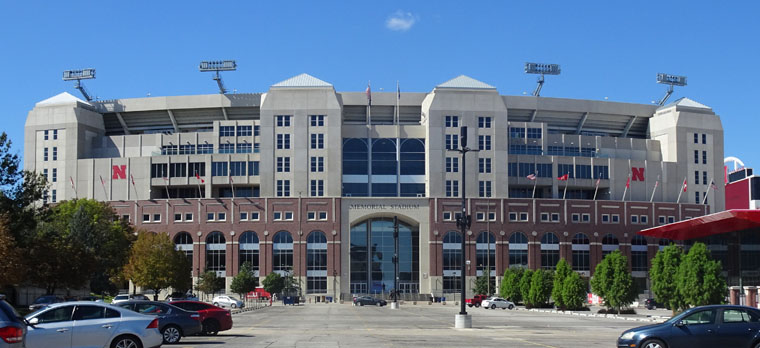
As in Bozeman, the involvement of the university makes this museum a superb place for education. The lady sitting in front of the Columbian Mammoth fossil below not only provides scale but she is also a student volunteer who is there to show visitors fossils up close and answer questions. There were 4 more students/faculty just in this hall and several more in other exhibits.
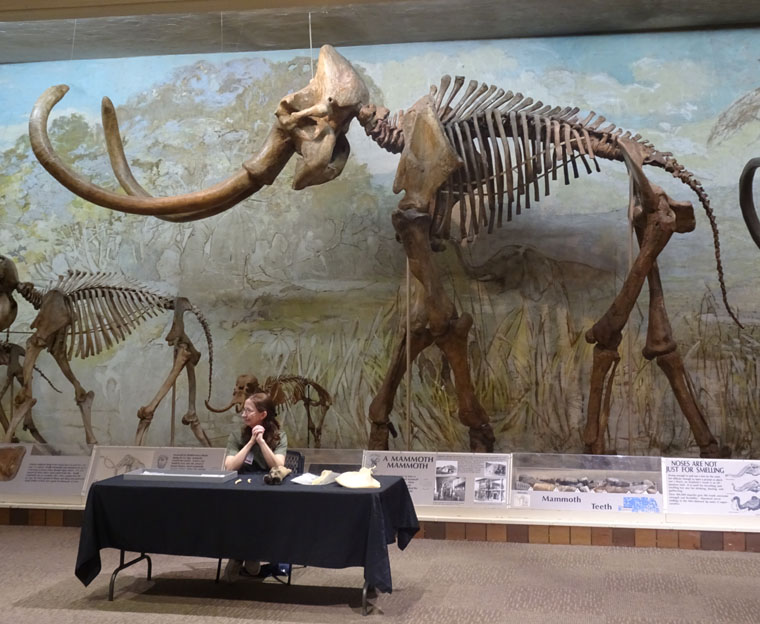
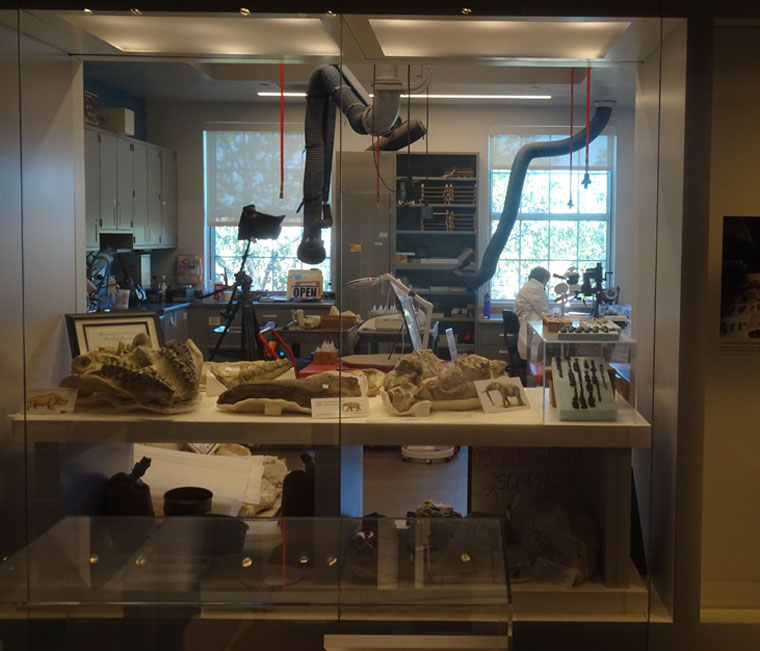
As well as natural history the museum had many exhibits on Nebraskan life, culture and history and, following on from my last post, the treatment of Native Americans.
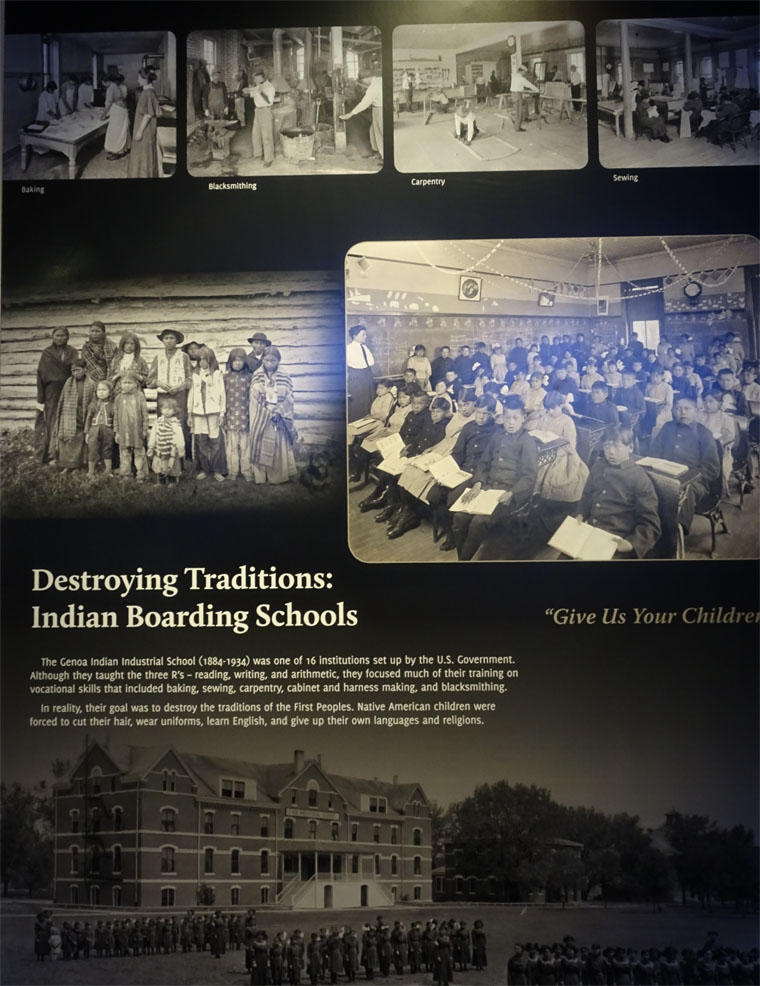
My final stop of the day was at the Nebraska State Capitol. This is the third Nebraska capitol building and was completed in 1932. The tower was designed to draw attention in the nearly flat state and remains the tallest building in Lincoln at 400 feet (122 m).
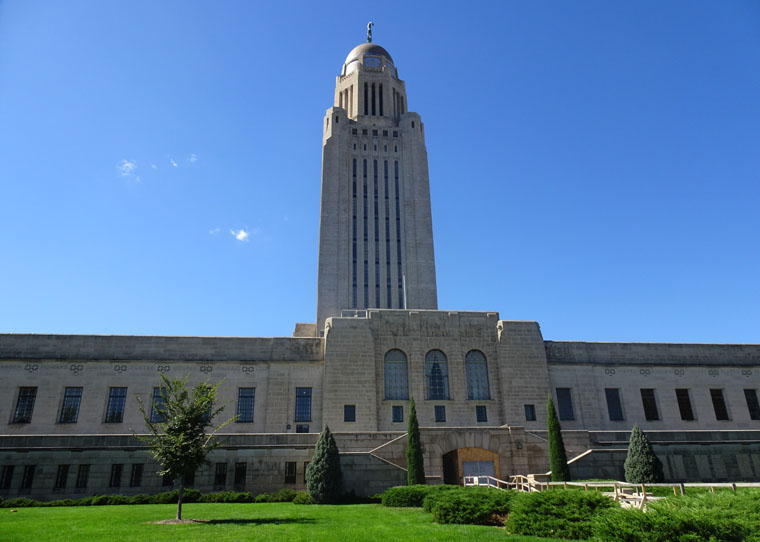
Inside, apart from the legislative chamber, this felt entirely different from the Wyoming capitol. It was sparsely furnished, had dark hallways and stairwells and was largely unwelcoming. Nebraska is the only state in the U.S. that has only one legislative chamber. It is referred to as “The Unicameral”.
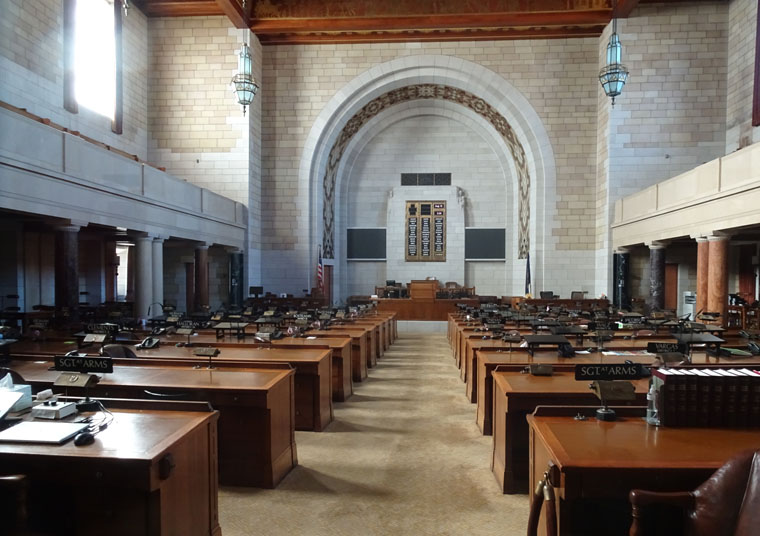
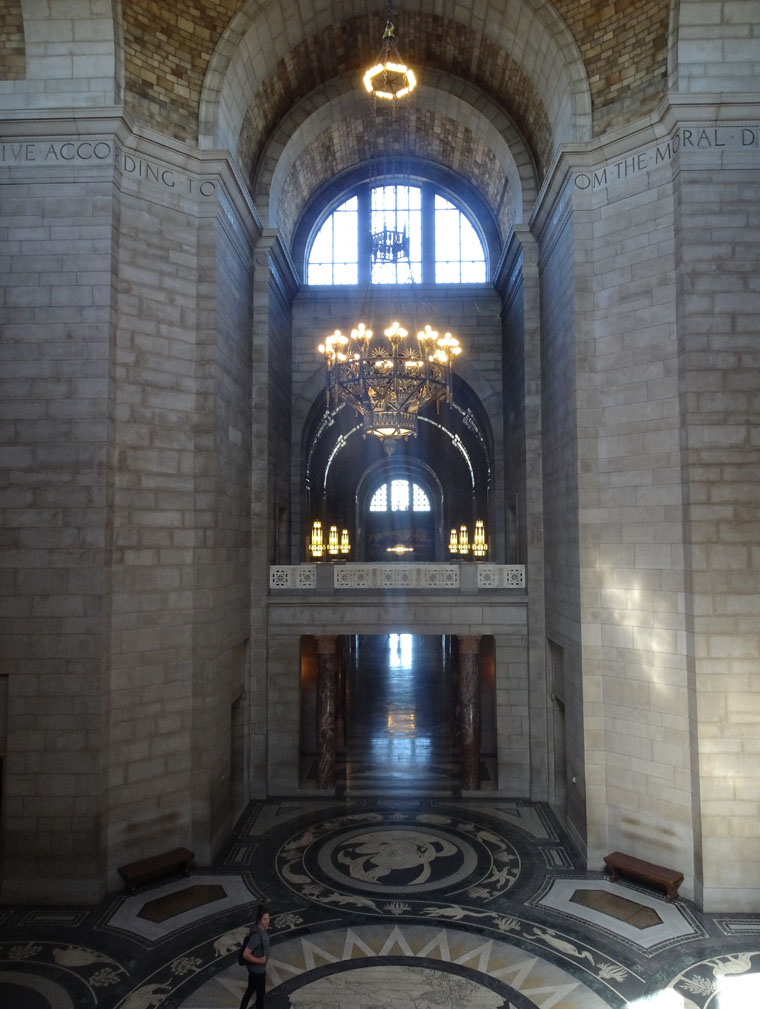
Monday, Sep 25 2023
My final drive was from Lincoln to Omaha, although I actually ended up in Iowa. On the way I stopped at the Strategic Air Command and Aerospace Museum in Ashland, NE. Reading about this I thought it sounded very much like the division of the Smithsonian Air and Space museum near Dulles airport and expected only a short stay. However, it was different and I ended up staying about 3 hours. The U.S. Strategic Air Command (SAC) was a branch of the military set up during the cold war with the purpose of providing deterrence and, therefore, ensuring nuclear war did not occur. The SAC’s home was at an air force base in Nebraska and they started collecting items for a museum. In 1974, when the SAC was abolished, they offered the collection to the state of Nebraska and a new museum was built to house the exhibits.
What made it different was the detailed stories they told about each aircraft as opposed to the usual practice of listing the statistics and campaigns that the model was used for, One story that I was not previously aware of was a bombing run over Japan in April 1942, just a few months after Pearl Harbor. In order to achieve this they had to use bombers that were not designed to be deployed on aircraft carriers but the raid had to be launched at sea. The planning, modifications, training and execution were described in detail. The effect was to force Japan to focus on defending the homeland at the expense of expanding the war in the Pacific.
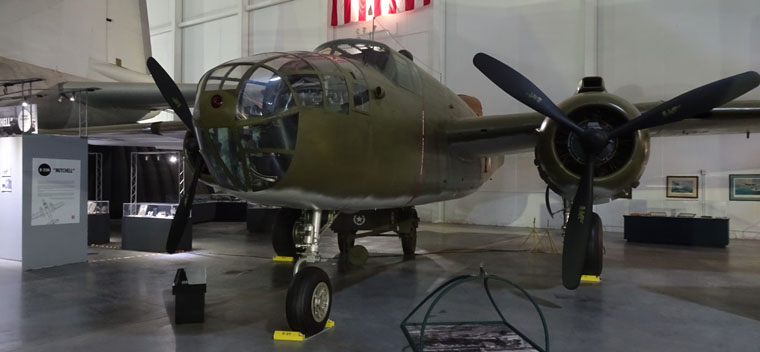
The Aerospace section was full of new science and ideas. They had a sample of a new material that could be used for aircraft or spaceships and sounds amazing. Unfortunately, the sample itself was under curved reflective glass and is almost invisible in my photo so here’s the description.
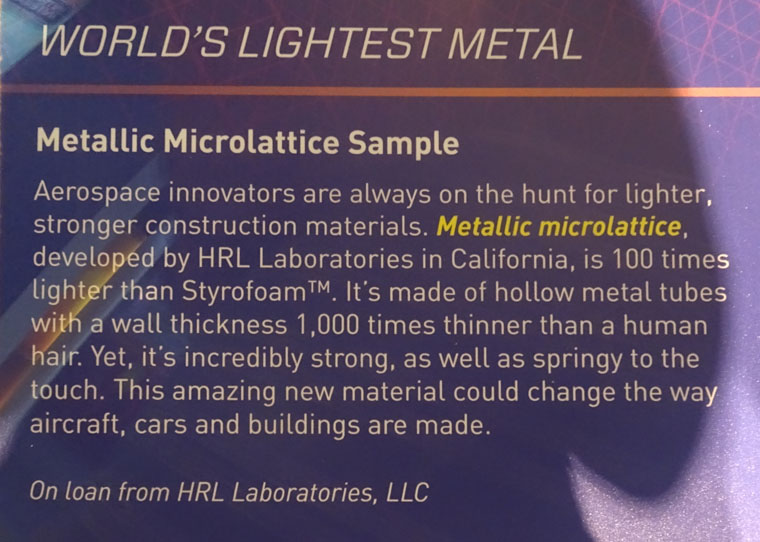
I then drove on to Omaha and the Bob Kerrey Pedestrian Bridge over the Missouri river which is adjacent to the NPS Lewis and Clark Trail Visitor Center. I felt that the trip had come full circle as the river and expedition were a big part of the first few days and enjoyed a walk across to Iowa and back.
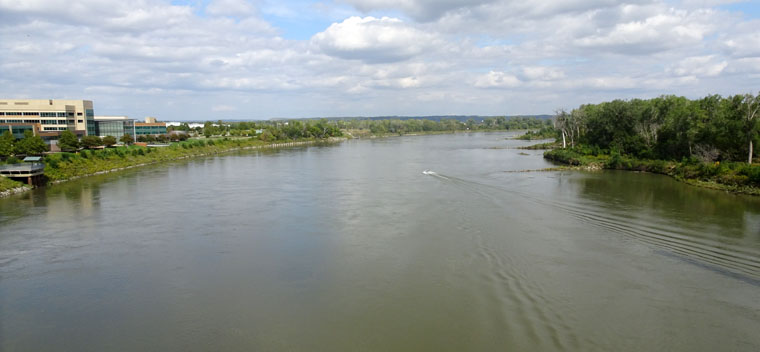
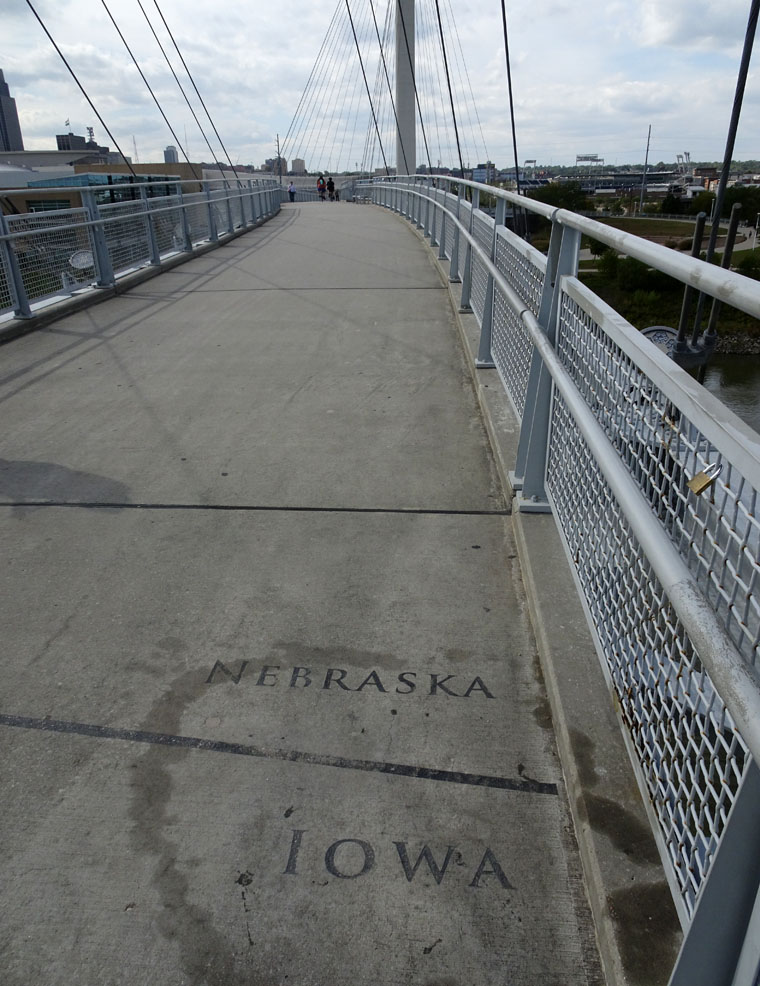
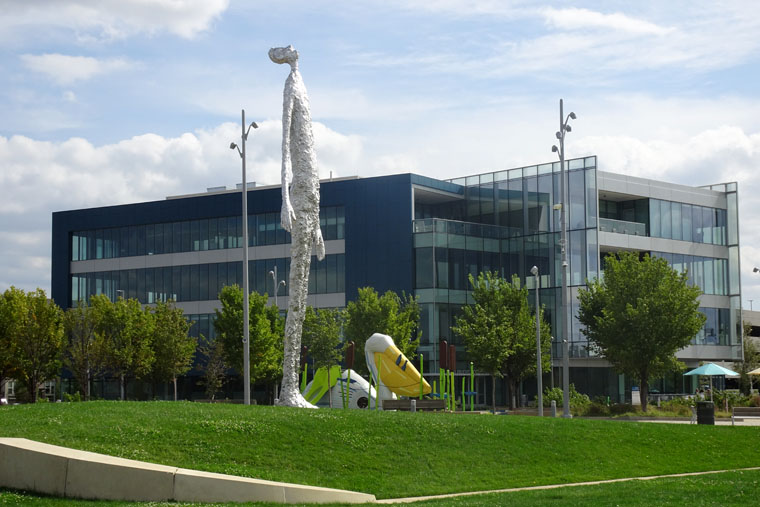
After returning to Nebraska l was confused to see a sign reading “Welcome to Iowa” while driving to my hotel near the Omaha airport. There are 2 square miles (518 hectares) on the west side of the river that are part of Iowa and my hotel is in Iowa. This is because a flood in 1877 caused the Missouri river to change its course by cutting off a meander. In 1892 the U.S. supreme court ruled that the land inside the original meander is still part of Iowa.
I plan to visit a museum tomorrow morning and then I fly home so this will be the final post until the next trip. Thanks to all who have read or commented. It’s nice to know I am traveling alone but still connected.

As always, really enjoyed reading of your interesting adventures. Safe trip home!
Thanks. Enjoy the rest of your trip. Hope everything is going as planned.
Yes everything going well, though a couple of prepaid accommodations said they were not prepaid ! Always something to sort.
Hyundai Santa Fe behaving but I still don’t like having a car that is keyless for ignition.
2 nights in Austin and 2 in Dallas then home.
Outlet mall run completed ( expensively) today – will need careful packing !
My first Presidential Library visit tomorrow – LBJ, and the grassy knoll to come in Dallas.
All the best
Bob
Glad to hear trip is going well. I always have to watch the prepaid accommodations to make sure I don’t pay twice.
My car is keyless entry and ignition and I love it. What don’t you like?
Enjoy Austin and Dallas. Haven’t done the LBJ library, a much under appreciated president during office. Should be interesting.
Hope the journey home is smooth.